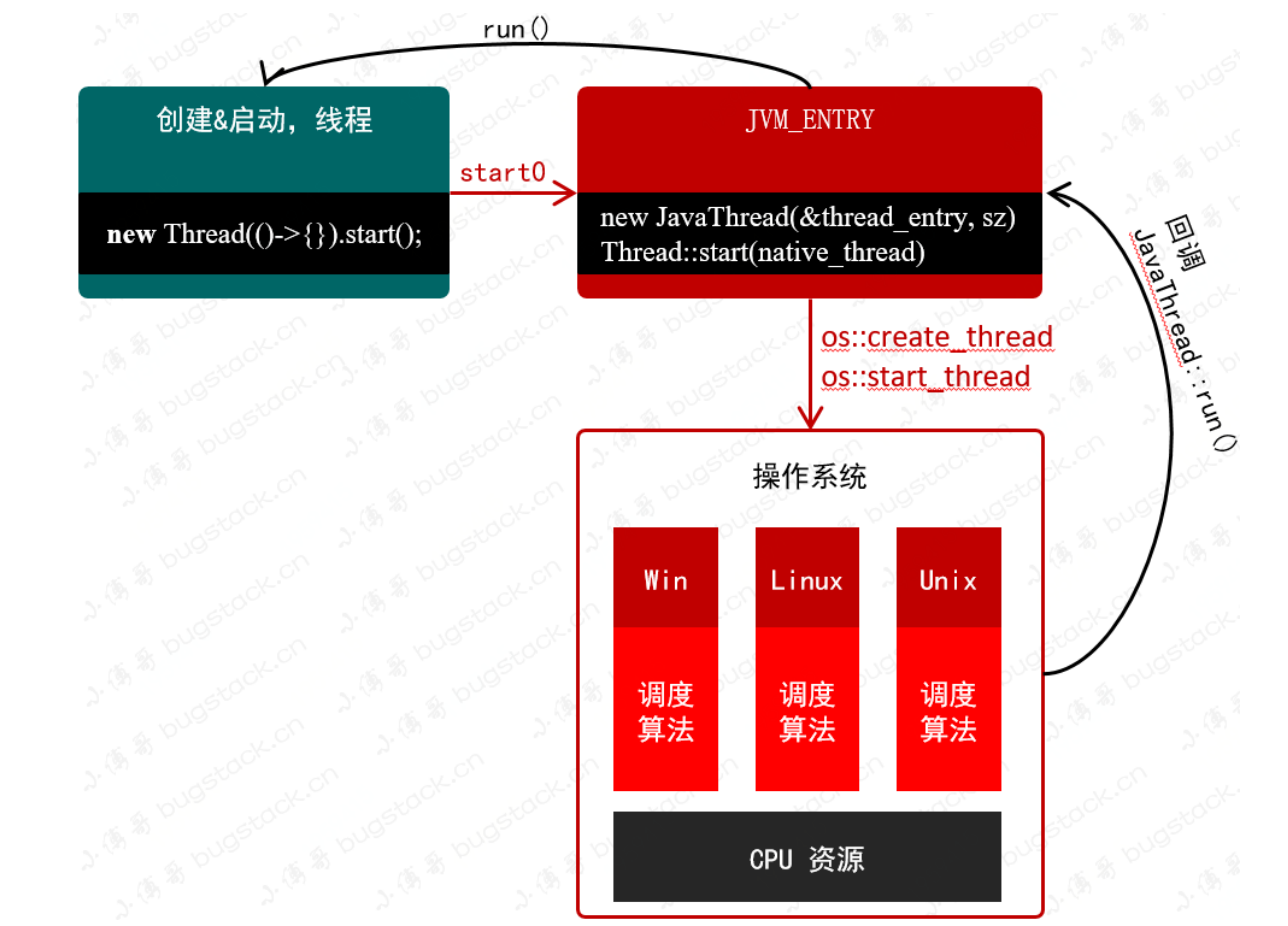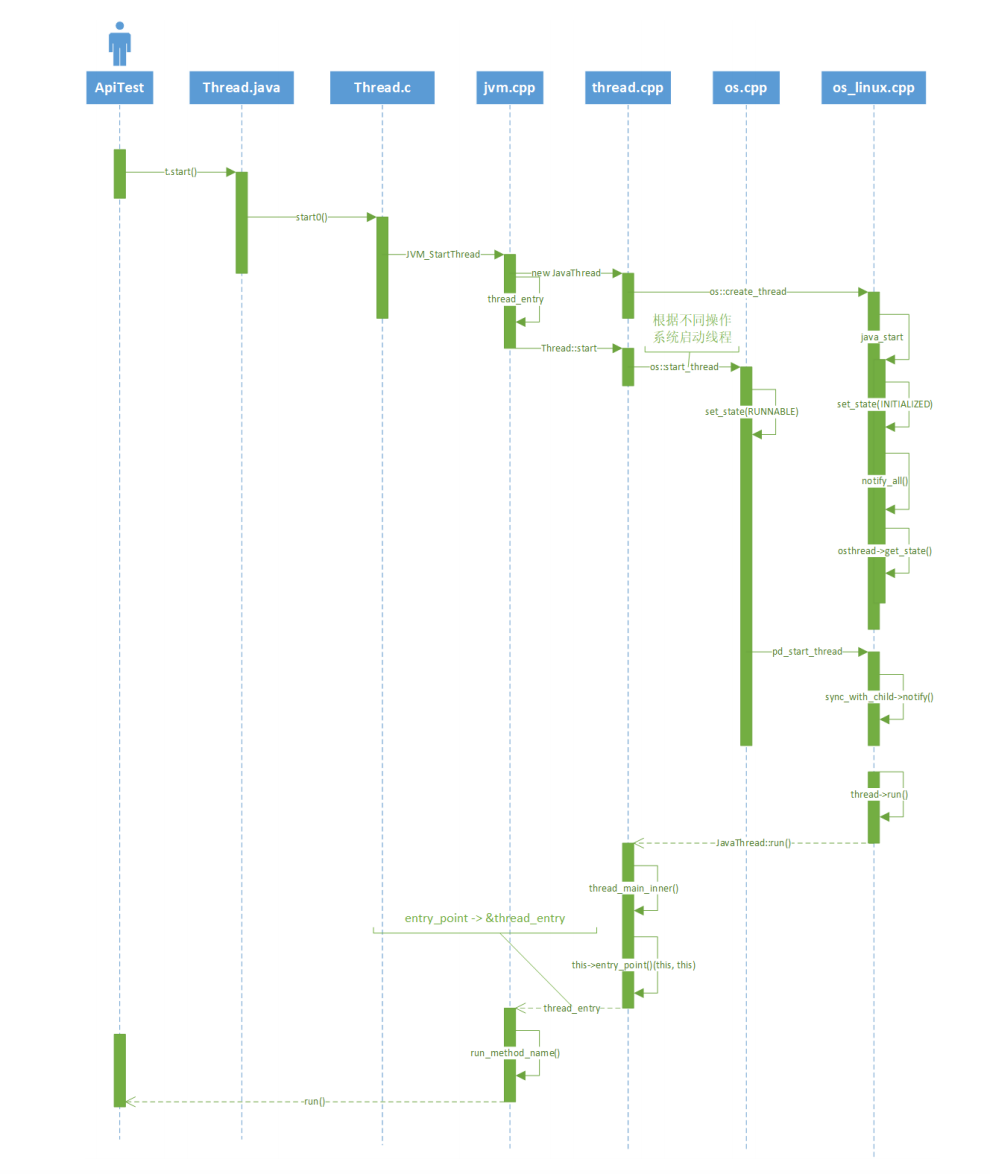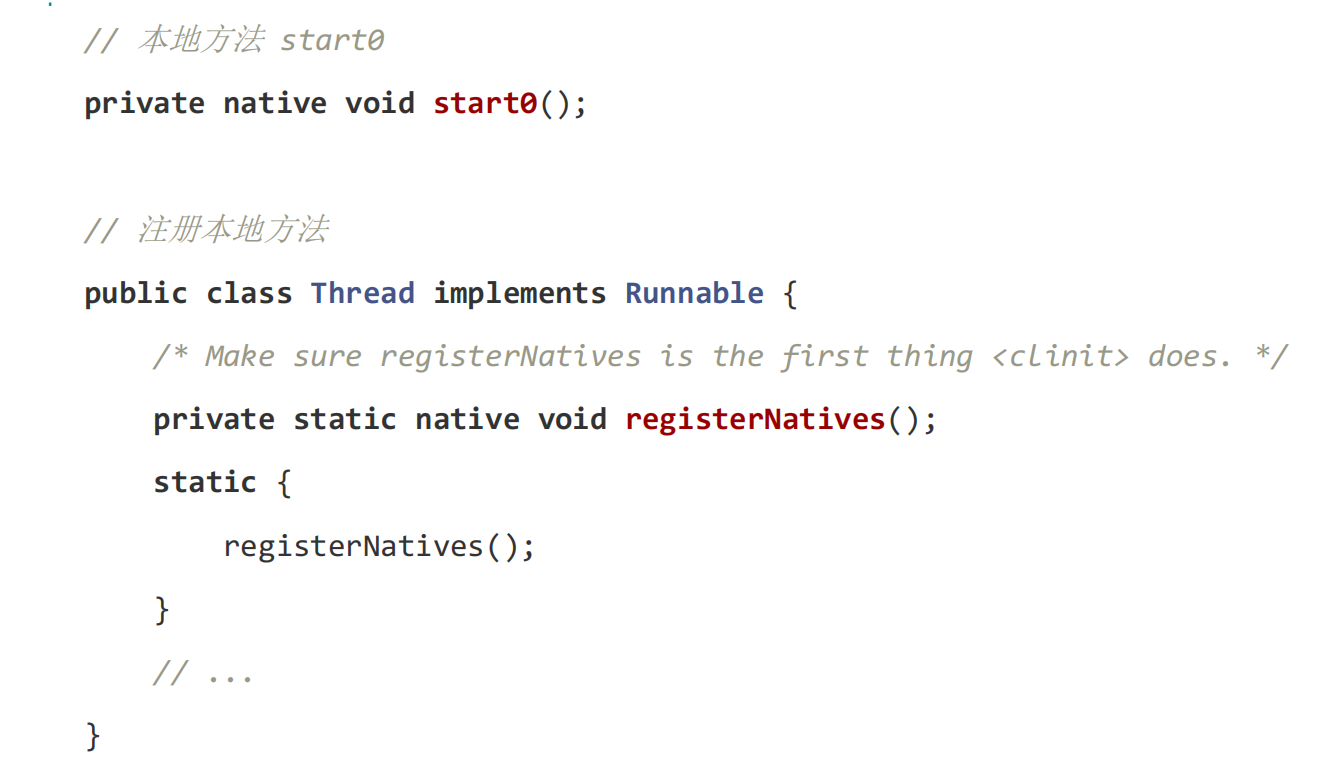java中启动一个线程很简单
new Thread(()->{
// TODD
}).start();
但是这个线程是如何启动起来的呢?主要会经过下面这个流程

- 线程的启动涉及到本地方法JNI的调用
- 具体的线程是映射到操作系统层面由操作系统处理
- 线程的启动涉及到线程的生命周期状态以及唤醒操作,所有有回调操作run()
具体的UML图如下 
Java 层面 Thread 启动
new Thread(() -> {
// todo
}).start();
// JDK 源码
public synchronized void start() {
if (threadStatus != 0)
throw new IllegalThreadStateException();
group.add(this);
boolean started = false;
try {
start0();
started = true;
} finally {
try {
if (!started) {
group.threadStartFailed(this);
} } catch (Throwable ignore) {}
} }
线程启动方法 start(),在它的方法英文注释中已经把核心内容描述出来。 Causes this thread to begin execution; the Java Virtual Machine calls the run method of this thread. 这段话的意思 是:由 JVM 调用此线程的 run 方法,使线程开始执行。其实这就是一个 JVM 的 回调过程,下文源码分析中会讲到
另外 start() 是一个 synchronized 方法,但为了避免多次调用,在方法中 会由线程状态判断。threadStatus != 0。
group.add(this),是把当前线程加入到线程组,ThreadGroup。
start0(),是一个本地方法,通过 JNI 方式调用执行。这一步的操作才是启动 线程的核心步骤。

start0(),是一个本地方法,用于启动线程。
registerNatives(),这个方法是用于注册线程执行过程中需要的一些本地方 法,比如:start0、isAlive、yield、sleep、interrupt0 等。
后面线程的启动过程涉及到了 JVM 的参与,整个源码分析可以结合着代码调用 UML 时序图进行观看,基本核心过程包括: Java 创建线程和启动、调用本地方法 start0()、JVM 中 JVM_StartThread 的创建和启动、设置线程状态等待被唤醒、根据不同 的 OS 启动线程并唤醒、最后回调 run() 方法启动 Java 线程
待续...